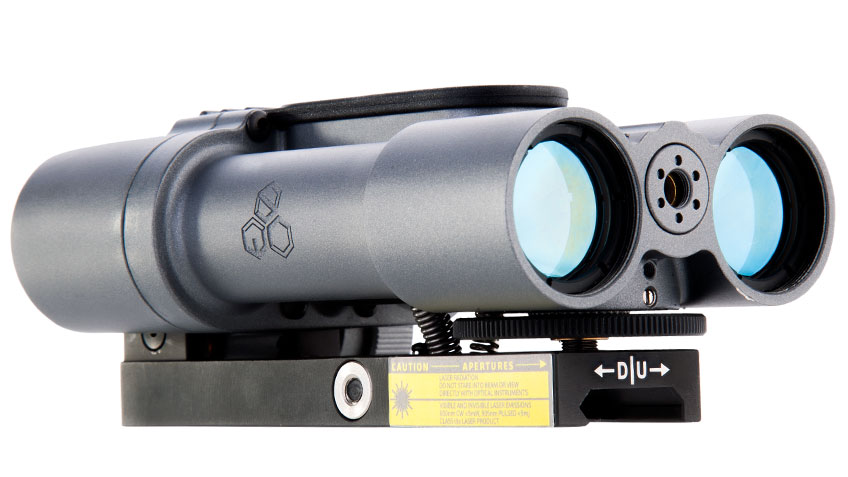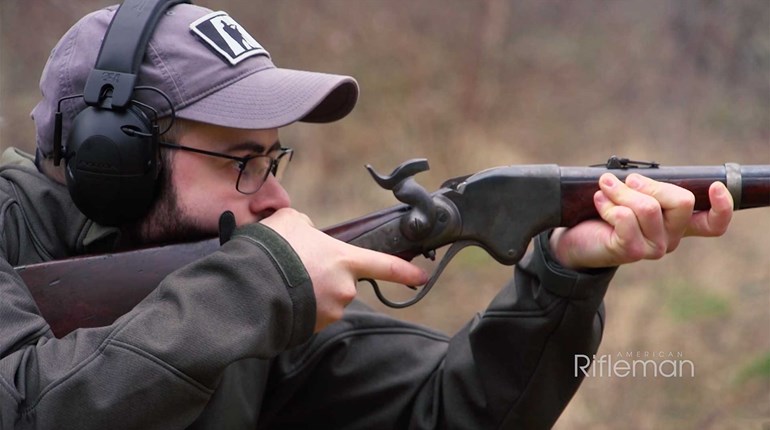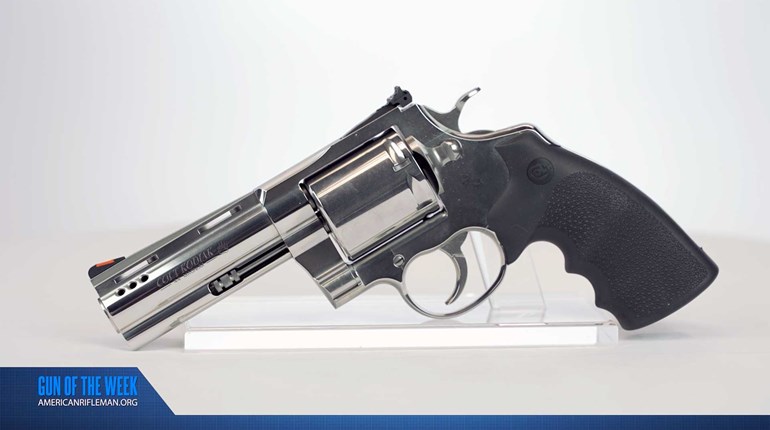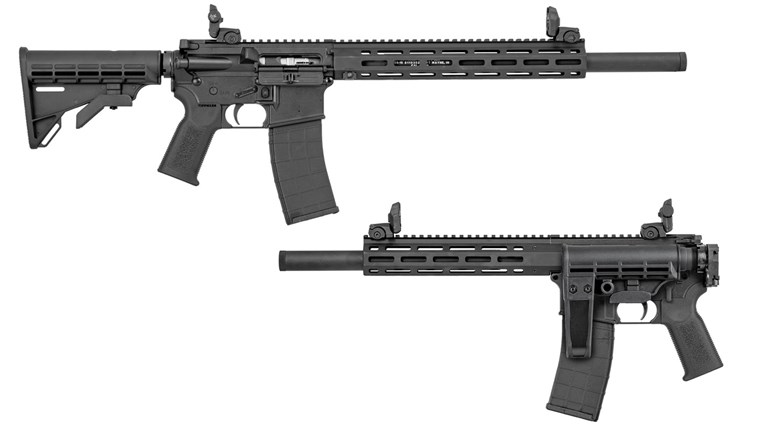
The world is in the midst of a technological revolution, and the firearm industry has not escaped this reality. SilencerCo took the next step in electronic evolution with its new Radius rangefinder, a compact, self-contained system that easily mounts to any Picatinny accessory rail. The unit features an infrared and visible laser system that runs off two CR123 batteries and provides more than 12 hours of continuous use.
According to the company, the maximum range of the Radius is a full mile. However, this is only the case in optimum low-light conditions on a reflective target. In bright sunlight, range is “limited” to about 1,000 yards, which is still impressive for any range- finder, much less a rail-mounted one.
The Radius is the first product from the company’s accessory arm, SilencerCo Weapons Research. This division aims to produce some of the most innovative and bombproof accessories on the market today, and the Radius certainly lives up to that goal. The Radius’ housing is shockproof and waterproof, and the system runs in temperatures ranging from -20 to 120 degrees Fahrenheit.
The Radius features a quick-detach mount and a rear-facing readout that displays the range to the target, in yards or meters, in easily seen neon-blue numerals. The readout can be adjusted to read vertically or horizontally, depending on the user’s mounting preferences. A continuous-range mode gives users an instantaneous readout of the target using three separate range readings: one primary and two secondary. These readings work together to weed out interference from rocks, trees and other landscape features and ensure that the unit ranges exactly the target the user wants.

I traveled to Texas for a whitetail deer cull and experienced some of the real-world benefits of using the Radius. Once a cull buck was seen, it was a viable target, no matter the range. One easy scan with the Radius dialed in the distance and made for an easy and ethical shot. The unit’s continuous scan mode accurately tracked game multiple times per second, leading to an exact reading I could count on, even when the deer were moving.
 However, one drawback to the device became apparent while hiking through Texas brush country: The Radius adds quite a bit of weight to the fore-end any rifle to which it is attached. With the two CR123 batteries included, the unit weighs more than a pound. While that might not sound like much, it’s enough to notice. The benefits of the unit are too great to discount it simply because of the added weight, though.
However, one drawback to the device became apparent while hiking through Texas brush country: The Radius adds quite a bit of weight to the fore-end any rifle to which it is attached. With the two CR123 batteries included, the unit weighs more than a pound. While that might not sound like much, it’s enough to notice. The benefits of the unit are too great to discount it simply because of the added weight, though.
The Radius is built for different kinds of shooters. Those shooters might be on the front lines, with one shot to take down an enemy combatant, or on the trophy hunt of a lifetime, with one shot to take down the ultimate prize. Those shooters might have learned the valuable lessons of static, known-distance targets long ago, and now they look to challenge themselves with reactive targets spread out over a vast, unknown expanse.




































